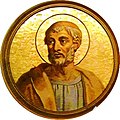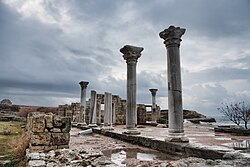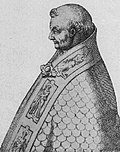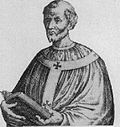
This is a list of non-extant papal tombs, which includes tombs not included on the list of extant papal tombs. Information about these tombs is generally incomplete and uncertain.
Contents
- Main locations
- Other destroyed or unknown tombs
- 1st century
- 2nd century
- 5th century
- 6th century
- 7th century
- 9th century
- 10th century
- 11th century
- 12th century
- 13th century
- Notes
- References
Chronologically, the main locations of destroyed or unknown papal tombs have been: the obscure tombs of the first two centuries of popes near Saint Peter, the repeated waves of translations from the Catacombs of Rome, the demolition of the papal tombs in Old St. Peter's Basilica, and the 1306 and 1361 fires in the Archbasilica of Saint John Lateran.
Papal tombs have also been destroyed by other instances of fire, remodeling, and war (most recently, World War II). Others are unknown due to creative or geographically remote methods of martyrdom, or—in the case of Pope Clement I—both. Burial in churches outside the Aurelian Walls of Rome (Italian: fuori le Mura)—in the basilicas of Paul or Lorenzo—have not generally survived.
































